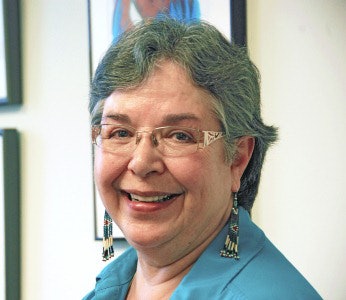 Joyce Silverthorne is director of the Office of Indian Education within the Department of Education.
Joyce Silverthorne is director of the Office of Indian Education within the Department of Education.The Office of Indian Education, though largely a K-12 office nestled within the Department of Education, is dipping its toes in the higher education pool with a recent professional development grants program targeting American Indian teachers and administrators. Under the new initiative, the office provides funding to institutions to train future teachers and administrators who will then go on to serve in American Indian communities.
Joyce Silverthorne, director of the Office of Indian Education, says that schools in American Indian communities often see high staff turnover rates. The problem, she says, is that Indian schools “may attract a new teacher or administrator because jobs may come open often, but [the areas] may not be some place they are prepared to serve.”
Silverthorne recounts that the community in which she grew up had a population of around 400—some of which, she quips, may have been cats and dogs. There were no grocery stores or gas stations. And TV and cell phone coverage was spotty.
“This is not the norm for many recent graduates,” she says. It is the task of her office to “provide opportunities for experience … and help them understand what they may be getting into when they get there” to teach in tribal schools.
In this capacity, the Office of Indian Education is there primarily to “provide support for students [and] target students who may be interested in becoming teachers and administrators,” Silverthorne says.
The program, which is typically a four-year program, though it is not atypical for a student to enter in his or her sophomore year of college, requires a service payback that sends students to serve in a tribal school one month for every month he or she received grant assistance in the professional development program.
The program primarily serves two school populations: the rural, isolated reservation community schools and the urban schools that have high populations of American Indian students from various tribal backgrounds.
“We have many American Indian students across the country and they come from very diverse settings, and the need to be competitive in today’s world is one that continues to be a challenge,” she says.
Silverthorne has been in education since 1977—working as a teacher in Two River Eagle School on the reservation in Pablo, Mont., then as a manager of the bilingual education personnel training program at Salish Kootenai College. From there, Silverthorne, who is a member of the Salish Kootenai tribe, went on to serve as director of the Tribal Education Department for the Tribes, and then in Montana’s office of public instruction, and finally, the U.S. Department of Education.
She credits her devotion to education to “a wonderful high school teacher who thought I’d make a good teacher.”
In her capacity as director of the Office of Indian Education, Silverthorne also oversees the implementation of Title VII, which provides programs to Local Education Agencies “to help students become as competent as their peers in closing the persistent achievement gap.”


















